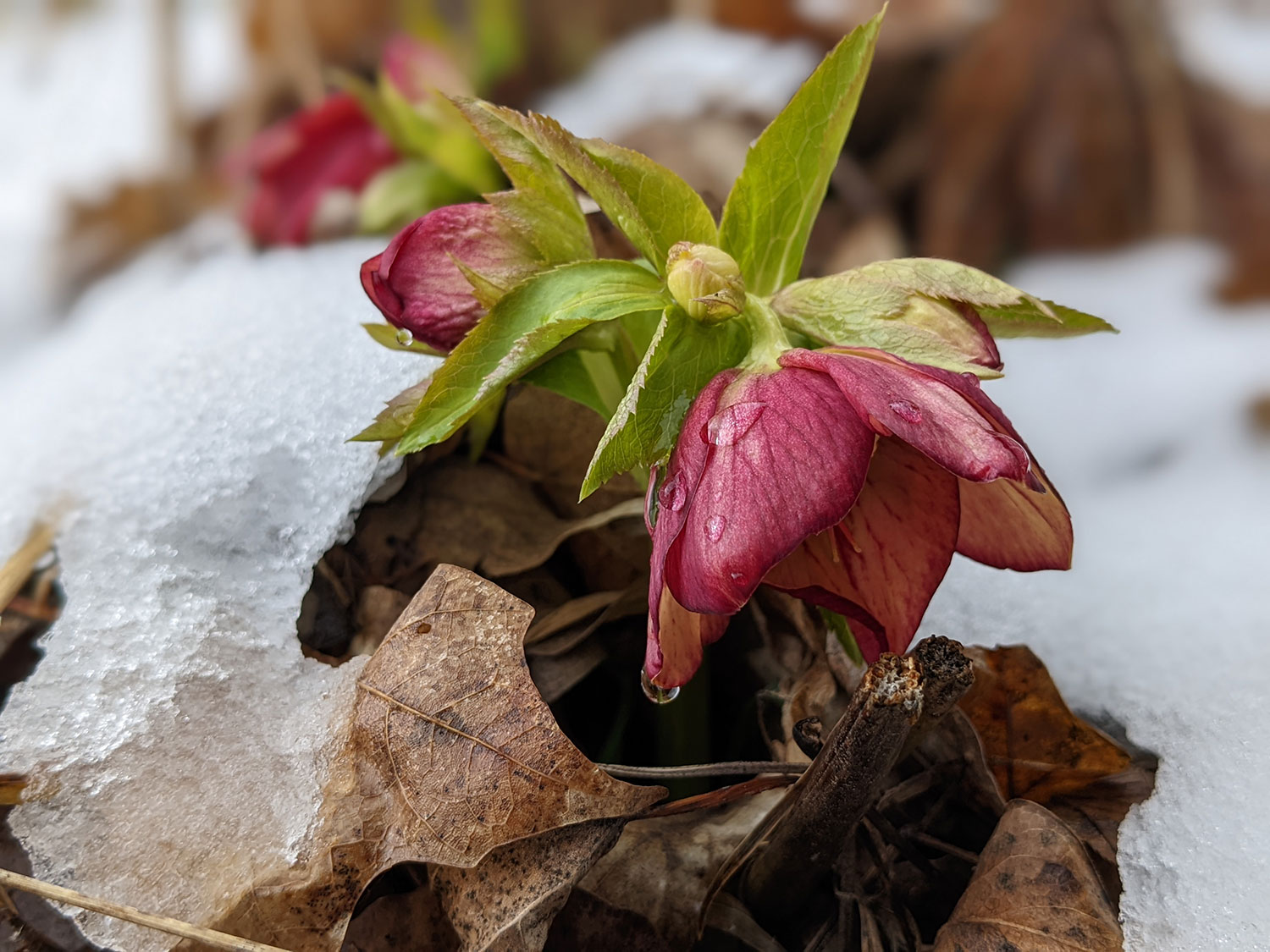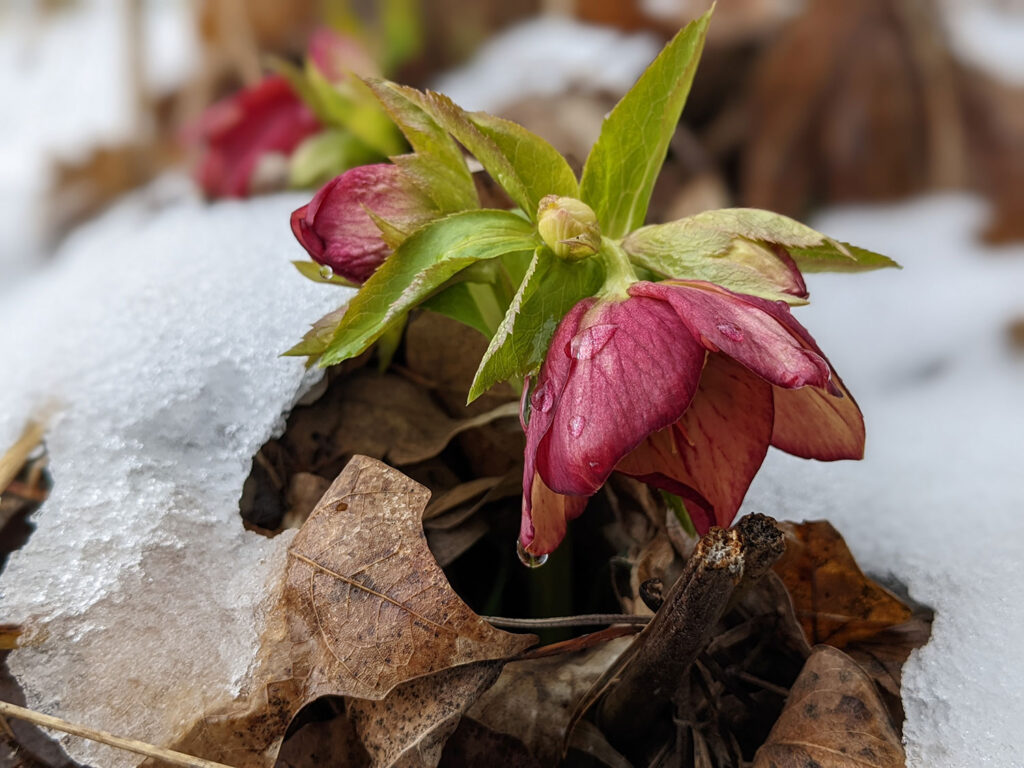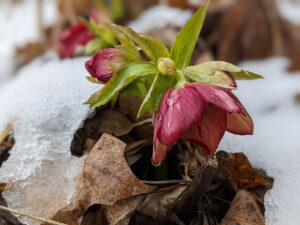 It must be spring. The flowers are poking through the cold soil only to be greeted by the cold and periodic dustings of wet snow. How much is too much cold for the early flowers, fruits, and vegetables? It depends on the plant and how much cold. Most plants, whether a bulb or perennial, that normally pop up in early spring are quite adept at handling some amount of cold. They rather like it. But we humans can certainly create problems where none would naturally exist. How do we do that? We touch, we “clean up,” we walk on the combination of plants and snow and ice. Let’s dive into what happens and what to do and not do.
It must be spring. The flowers are poking through the cold soil only to be greeted by the cold and periodic dustings of wet snow. How much is too much cold for the early flowers, fruits, and vegetables? It depends on the plant and how much cold. Most plants, whether a bulb or perennial, that normally pop up in early spring are quite adept at handling some amount of cold. They rather like it. But we humans can certainly create problems where none would naturally exist. How do we do that? We touch, we “clean up,” we walk on the combination of plants and snow and ice. Let’s dive into what happens and what to do and not do.
What happens? Weatherwise, that one is easy. Momma Nature does her usual spring dance. Enter the cold weather symphony of freezing temps and high winds, with snow and ice. Given the changing climate conditions, expect to see wider swings in condition severity. Yet it is not the intensity of the cold nor is it the intensity of the heat, alone, that take a toll on plants. Stand-alone tolerance at either end is amazing. It is the fast-paced swings from one spectrum to the other that tends to cause the most harm to plant systems. Consider a human’s ability to remove or add clothing when going from hot to cold or cold to hot. What if you didn’t have anything to put on or take off to moderate the differences? Could the human system adjust, adapt, and thrive nearly as well as do many plants? I doubt it.
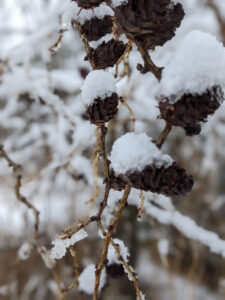 In relation to the plants, adjusting is a more complex matter than grabbing a sweatshirt. Plant growth depends on a variety of conditions to emerge, grow, flower, fruit, reproduce, and finish either a season or a life cycle. Light, day length, soil temperature, fertility, pH, and/or the availability of water determine when and how each of these stages are approached and completed. How each plant responds to the conditional changes within each season are dependent on the inherent adaptability of each species.
In relation to the plants, adjusting is a more complex matter than grabbing a sweatshirt. Plant growth depends on a variety of conditions to emerge, grow, flower, fruit, reproduce, and finish either a season or a life cycle. Light, day length, soil temperature, fertility, pH, and/or the availability of water determine when and how each of these stages are approached and completed. How each plant responds to the conditional changes within each season are dependent on the inherent adaptability of each species.
As with everything, some are tough, some a bit more delicate. But no matter the toughness, when faced with ice or snow, freezing temperatures will dictate a physiologic response. Important questions for gardeners at the beginning of every planting season are when I can plant without the fear of losing everything? and what temperature causes a damaging freeze? Although it differs from plant to plant, in general gardeners can expect some sort of tissue damage when temperatures are anywhere from 26 to 33 degrees Fahrenheit for five or so hours.
Is there anything that can survive those low temperatures? Spring perennial plants are less likely to suffer permanent damage from seasonal cold weather snaps. When snow and ice cover tough spring plants, they act as insulation and even release a bit of heat that helps the plants resist death via cold weather. We humans do not do them any favors by stomping around, crushing the plants. 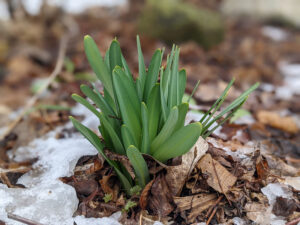 The simple act of brushing off the snow and/or ice can cause severe damage. The beneficial effects of that insulation are interrupted when something hot and/or heavy (human hands and/or feet) enforce contact between the cold and the tender plant tissue. The plant will respond to that contact with ruptured cells.
The simple act of brushing off the snow and/or ice can cause severe damage. The beneficial effects of that insulation are interrupted when something hot and/or heavy (human hands and/or feet) enforce contact between the cold and the tender plant tissue. The plant will respond to that contact with ruptured cells.
How does the cold annual plants? There are some annuals that rather like a bit of cold. If you’re dying to get some plants in the ground before temperatures and weather conditions stabilize, some of the most cold hardy vegetables include beets, broccoli, brussels sprouts, cabbage, carrots, horseradish, kale, onion, peas, potatoes, spinach, radishes, rutabaga, and turnips. They can all tolerate temperatures in the upper 20’s.
In the world of annual flowers, try direct seeding cold hardy types e.g., larkspur, poppies, and stock. If throwing caution to the wind and going beyond the known cold hardy annuals and vegetables, be aware that cold temperatures may (read: will) inhibit fruit and flower development. Not just for a couple weeks but for an entire season. If caution is still blowing in the wind – provide adequate coverage when outdoor temperatures are below 48 – 50 degrees Fahrenheit, especially for those tender seedlings.
